
How were Russian tsars crowned?
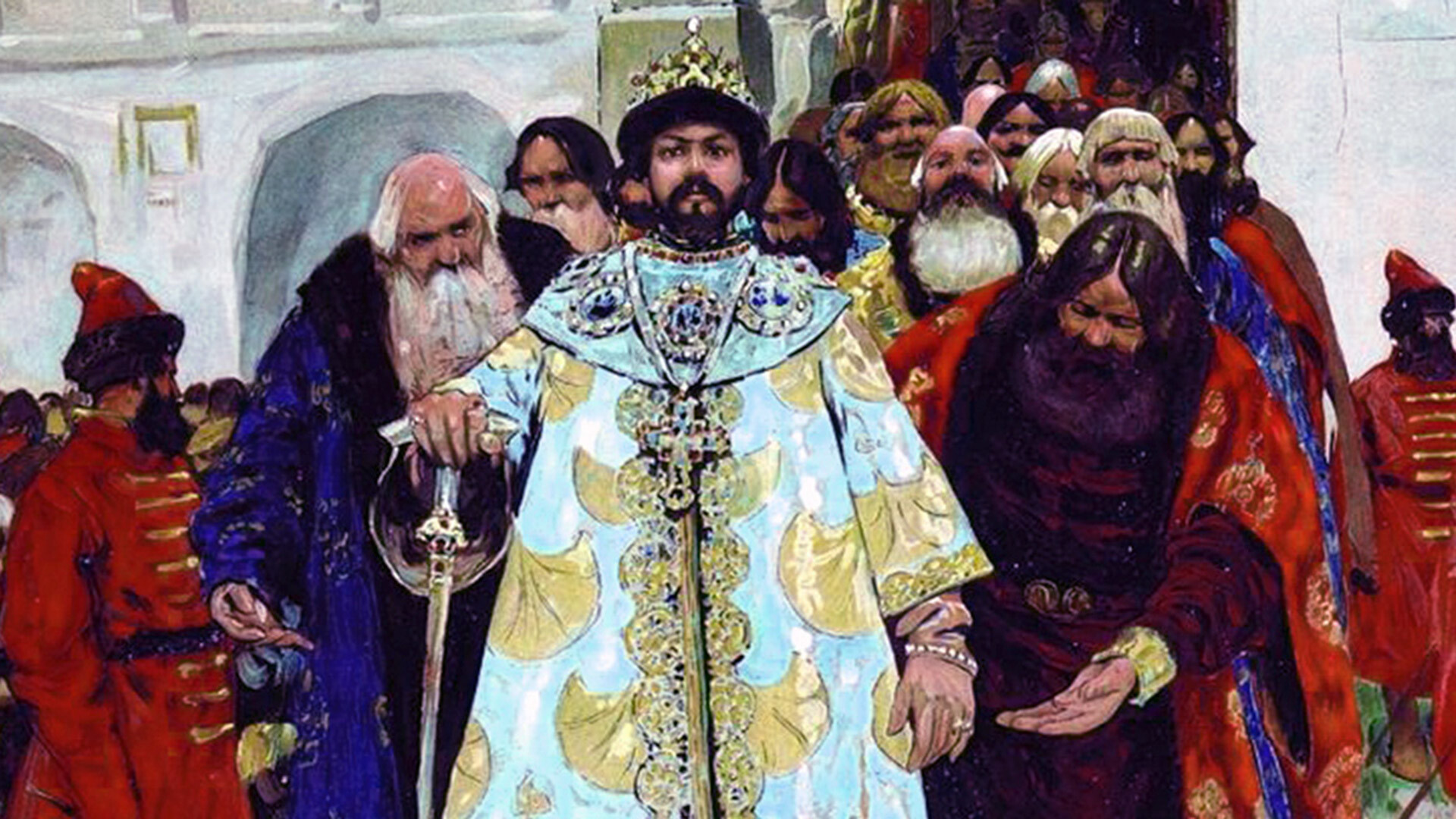
The age of Russian Tsardom has two eras. The first one began in 1547, when Ivan the Terrible became the first tsar, and lasted until 1721, when Peter the Great accepted the emperor's title. After that officially began Russia’s imperial era that ended in 1917. This text specifically focuses on the coronation ceremonies for Russian tsars before 1721.
On January 16, 1547, Ivan the Terrible was Russia’s first ruler to be crowned tsar. In fact, however, that ceremony has its roots in events that transpired half a century earlier. The foundations of this process were set as early as 1498 under Ivan III whose grandson, Dmitry (1483-1509), was crowned as Grand Prince.
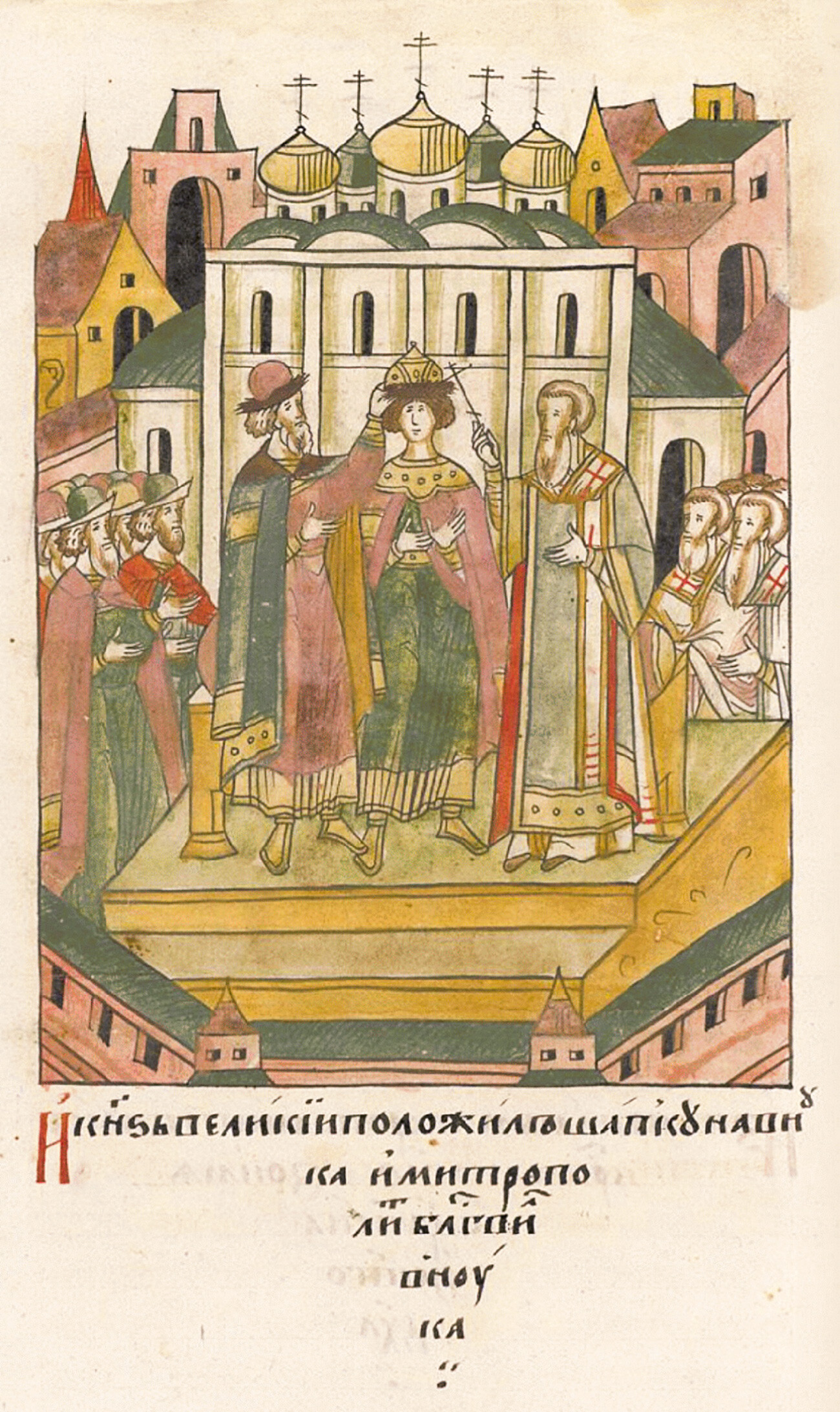 Dmitry "The Grandson" Ivanovich being crowned as the Grand Prince of Moscow. An illustration from a 16th-century chronicle.
Dmitry "The Grandson" Ivanovich being crowned as the Grand Prince of Moscow. An illustration from a 16th-century chronicle.
During the 1498 ceremony, Dimitry was blessed by the metropolitan, and Ivan III put on him his barmas (special shoulderplates with jewelry) and the Monomakh’s Cap.
Ivan the Terrible was crowned in much the same way, but the ceremony became more elaborate: the regalia included "the rightful life-giving cross” that was believed to contain a piece of the Holy Cross on which Jesus Christ was crucified. This relic was placed on the tsar as a symbol of his royal mission: he was responsible for the sins of his people before God.
For the first time, the royal scepter was included among the regalia, and the royal throne also began to be used. This crowning, however, did not yet include the anointing to tsardom.
What was the anointing to tsardom?
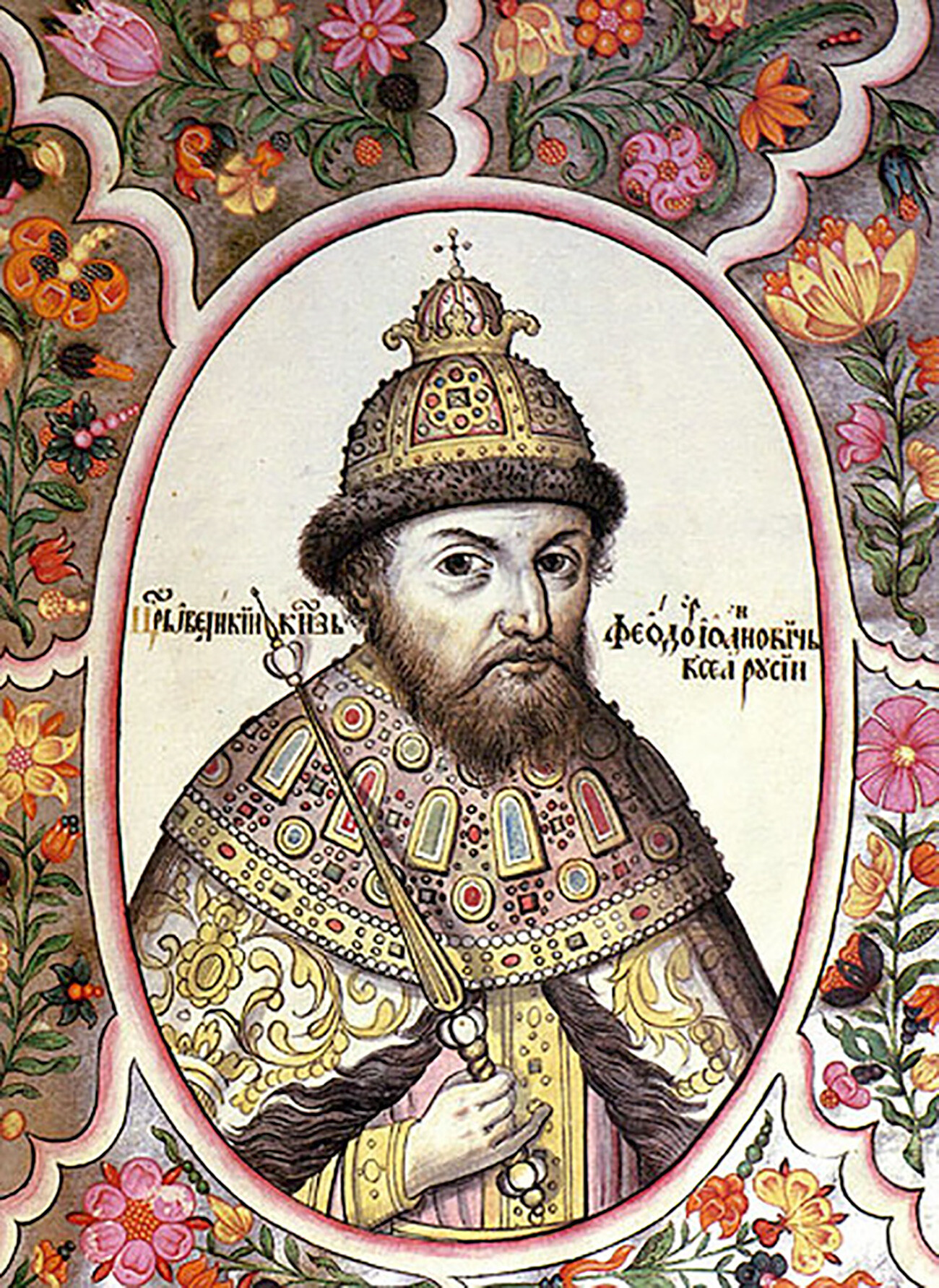 Tsar Fedor Ivanovich
Tsar Fedor Ivanovich
The sacrament of anointing with holy myrrh (a special consecrated oil) was a symbol of "wedding" the tsar with his realm and the people. The first tsar anointed in Russia was the son of Ivan the Terrible, Feodor Ivanovich (1557 – 1598), who was crowned on May 31, 1584 – on his 27th birthday.
The tsar, after taking off Monomakh’s Cap that had been placed on the new Russian ruler’s head by the Patriarch, approached the Church leader who then used a special brush to anoint the country’s new ruler with myrrh on his forehead, eyelids, nostrils, lips, ears, chest and hands on both sides. At each moment in the anointing, the Patriarch said: "The Seal of the Holy Spirit. Amen."
Interestingly enough, after this sacramental ritual was performed the tsar couldn’t wash or take off his clothes for eight days according to church rules. Russia’s particular sacrament of anointing differentiated from Byzantium and European countries by the fact that it was performed after the tsar had been crowned, and not before.
The coronation ceremony of the tsars
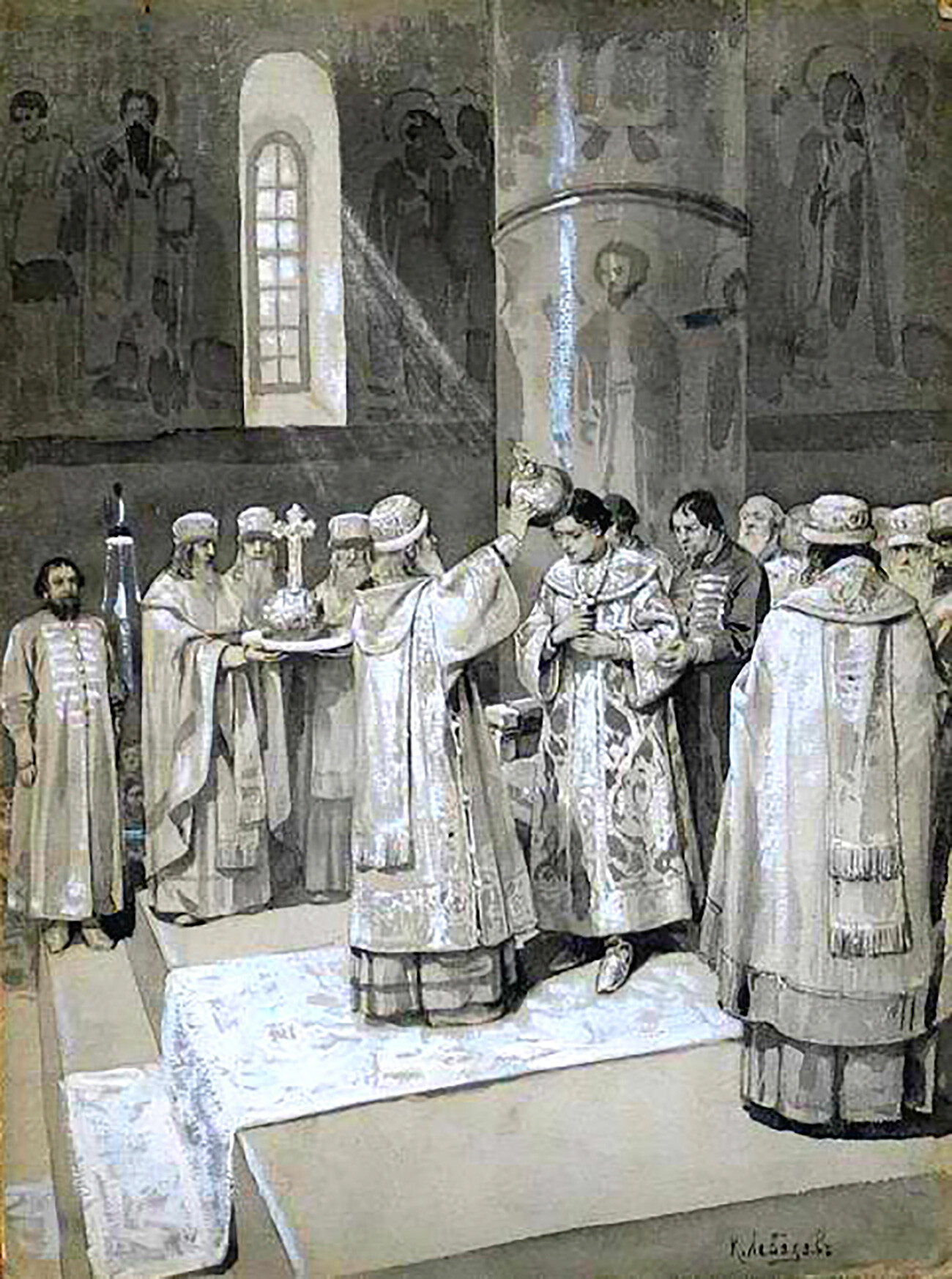 Ivan the Terrible being crowned as a tsar in 1547.
Ivan the Terrible being crowned as a tsar in 1547.
The protocol for the coronation of Feodor Ivanovich (1584) was copied from the Byzantine rite, and it included the sacrament of anointing and many other sacred acts.
English diplomat Jerome Horsey was an eyewitness of the ceremony. According to his account, in the beginning of the ceremony the tsar, who was surrounded by a retinue of the highest officials and clergy dressed in the richest clothes, left his Kremlin chambers and the whole retinue began slowly moving from one Kremlin cathedral to another.
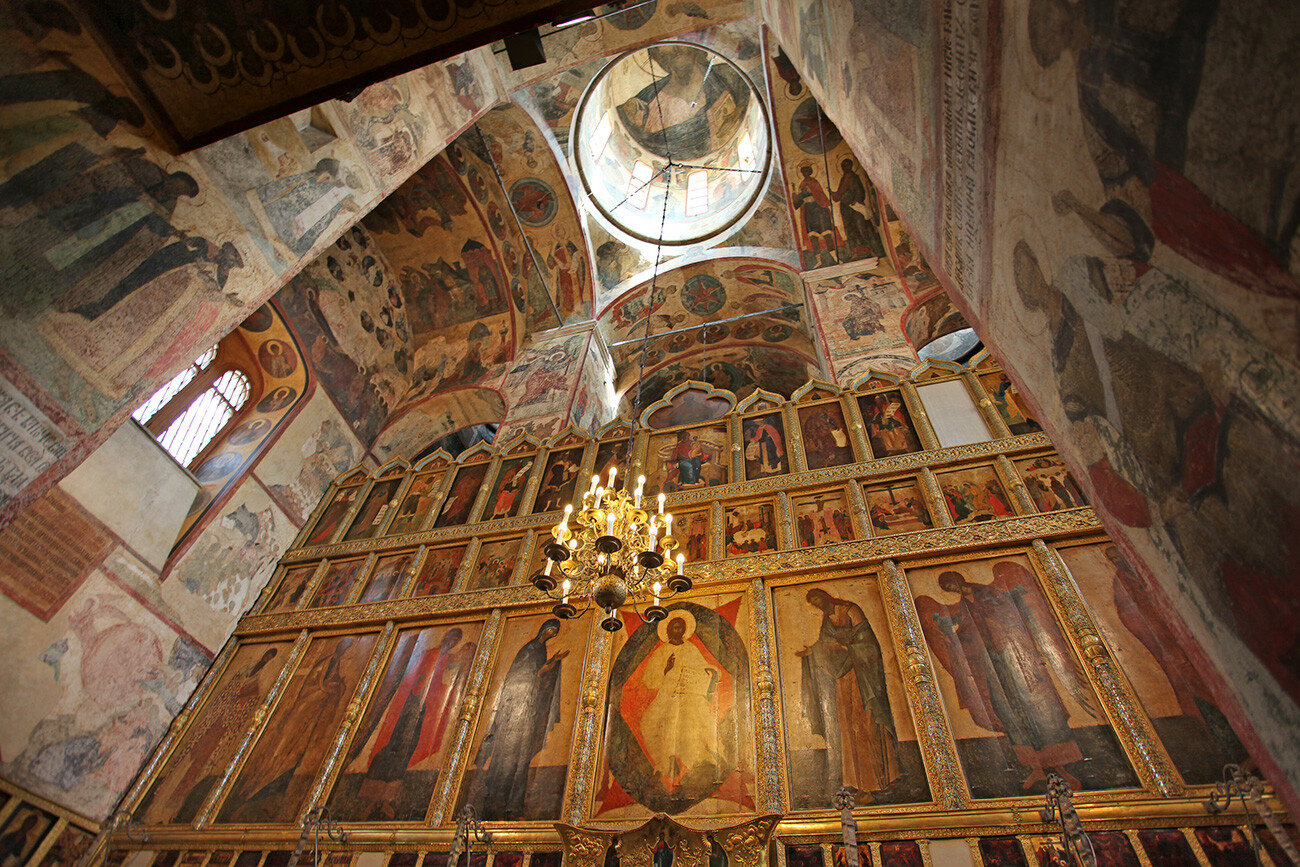 Uspensky Sobor or Assumption Cathedral of the Moscow Kremlin, where Russian tsars were crowned.
Uspensky Sobor or Assumption Cathedral of the Moscow Kremlin, where Russian tsars were crowned.
Since Ivanovskaya Square in the Kremlin was packed with people, "a scaffolding 150 fathoms (270 meters – RB) long, two fathoms (5 meters) wide and three feet high were made for the tsar and his retinue, so that they could pass from one church to another through the crushing crowd, as there were so many people that some were crushed to death in this crowd at the time,” Horsey wrote.
During the ceremony, the porches of the temples were covered with red velvet and cloth. "As soon as the tsar passed through," Horsey wrote, "the brocade, velvet, and cloth were ripped off by those who could only reach them, each wishing to have a piece to keep as a memory.”
After the entrance of the tsar into the Assumption Cathedral, a special "Great Treasury attire" was put on him – a robe decorated with gold and precious stones, which weighed, according to Horsey, about 100 kilograms. Fedor Ivanovich was elevated to the tsar's seat and the metropolitan crowned him with the Cap of Monomakh.
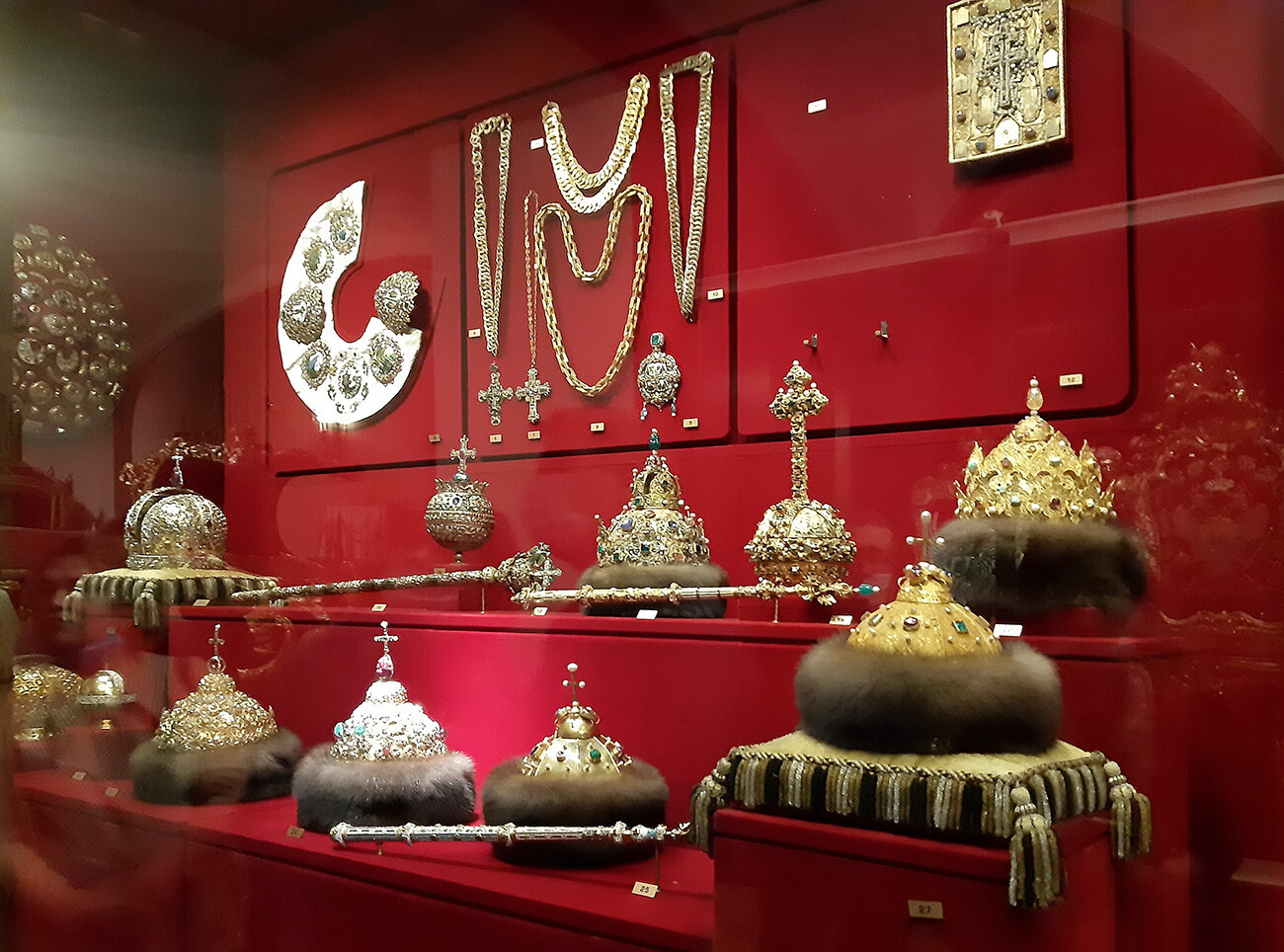 The crowns, scepters, and orbs of the Russian Tsardom in the Moscow Kremlin Armory
The crowns, scepters, and orbs of the Russian Tsardom in the Moscow Kremlin Armory
At the same time in front of the tsar "six crowns were placed – the symbols of his power over the lands of the country." In addition to the scepter that was "made of unicorn bone, three and a half feet long, decorated with rich stones," Fyodor Ivanovich was given an "apple" – an orb, a symbol of his spiritual power.
After the coronation and anointing, the tsar went to the church gates, and the people cried out: "God save tsar Feodor Ivanovich of all Russia!" After that the tsar and everyone else went to the Palace of Facets, the Moscow Kremlin’s main ceremonial hall, where a large-scale coronation feast was given. The festivities to mark the coronation lasted for a week.
Roughly the same scenario was used for the coronation ceremonies of all subsequent Russian rulers. Only the details and the number of crowns differed. For example, False Dmitry I was crowned in 1605 with three crowns – the Monomakh's Cap, the Austrian Crown, and the Cap of Kazan.
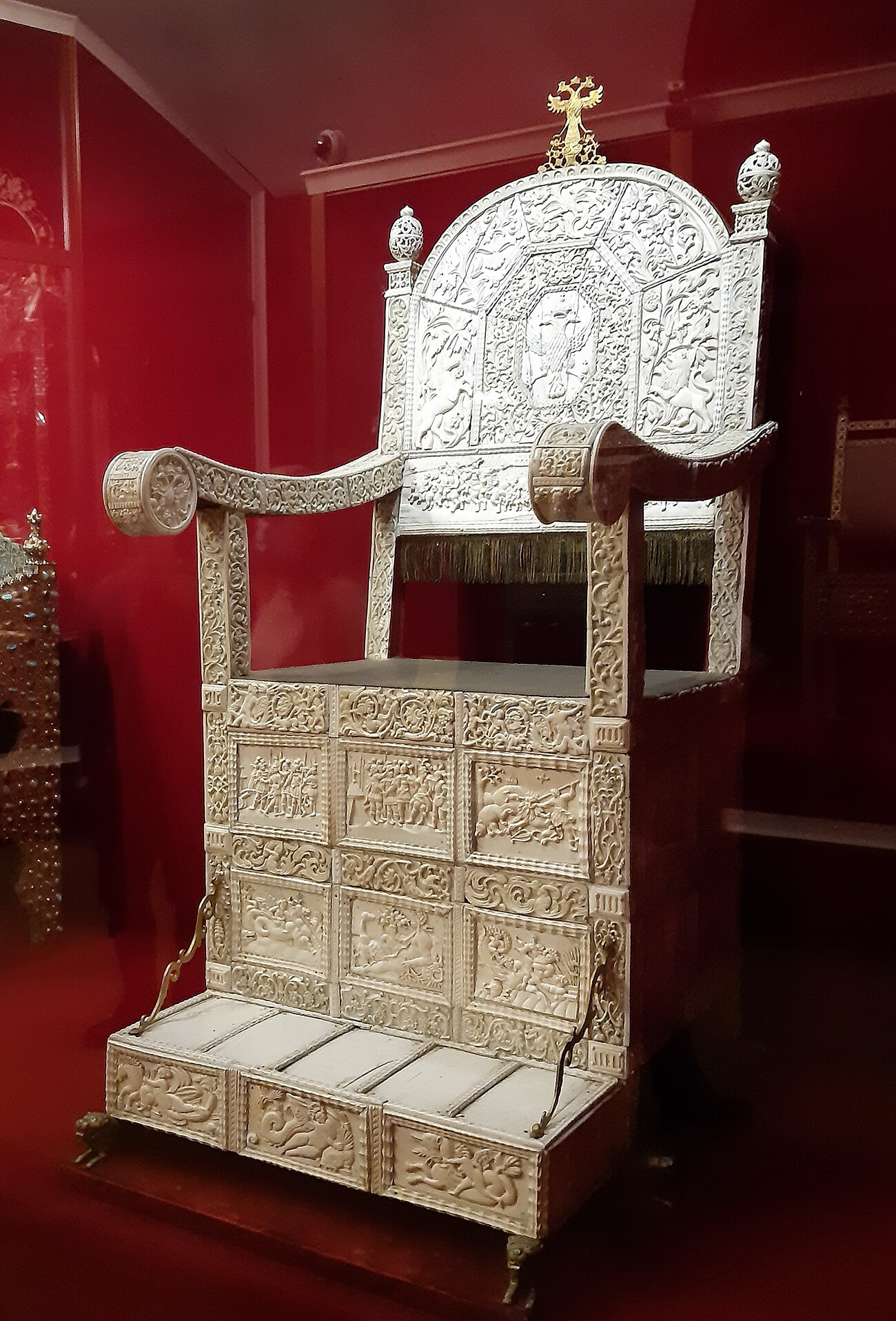 An ivory throne, 16th century. Possibly belonged to Ivan the Terrible. Moscow Kremlin Armoury.
An ivory throne, 16th century. Possibly belonged to Ivan the Terrible. Moscow Kremlin Armoury.
The last royal Russian investiture according to this custom was the unique double coronation of the half-brothers Peter I and Ivan V in 1682. For this event a second coronation head piece of Monomakh (called Monomakh's Small Cap) was specially made for the ceremony in the Kremlin; this was intended for Peter since he was the younger of the two brothers.
The coronation ceremony of the imperial era, although took place in the Assumption Cathedral in Moscow, was slightly different. It will be discussed in our next article.












